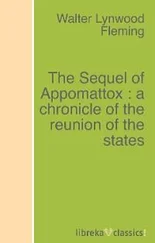Walter Gallichan - The Story of Seville
Здесь есть возможность читать онлайн «Walter Gallichan - The Story of Seville» — ознакомительный отрывок электронной книги совершенно бесплатно, а после прочтения отрывка купить полную версию. В некоторых случаях можно слушать аудио, скачать через торрент в формате fb2 и присутствует краткое содержание. Жанр: foreign_antique, foreign_prose, Путешествия и география, на английском языке. Описание произведения, (предисловие) а так же отзывы посетителей доступны на портале библиотеки ЛибКат.
- Название:The Story of Seville
- Автор:
- Жанр:
- Год:неизвестен
- ISBN:нет данных
- Рейтинг книги:4 / 5. Голосов: 1
-
Избранное:Добавить в избранное
- Отзывы:
-
Ваша оценка:
- 80
- 1
- 2
- 3
- 4
- 5
The Story of Seville: краткое содержание, описание и аннотация
Предлагаем к чтению аннотацию, описание, краткое содержание или предисловие (зависит от того, что написал сам автор книги «The Story of Seville»). Если вы не нашли необходимую информацию о книге — напишите в комментариях, мы постараемся отыскать её.
The Story of Seville — читать онлайн ознакомительный отрывок
Ниже представлен текст книги, разбитый по страницам. Система сохранения места последней прочитанной страницы, позволяет с удобством читать онлайн бесплатно книгу «The Story of Seville», без необходимости каждый раз заново искать на чём Вы остановились. Поставьте закладку, и сможете в любой момент перейти на страницу, на которой закончили чтение.
Интервал:
Закладка:
The wretched Mayor sat down in his room to meditate upon the best means of tracing the criminal. Meanwhile the story of the murder was abroad, and people were talking of the affair. The gossip reached the ears of an old woman, who went at once to the Alcalde, telling him that she had seen a fight from her bedroom window late during the previous night. The combatants appeared to be gentlemen, but to make sure, she lit a candle and leaned out of the window. One man had his back towards her, and she could not see his face. But of the identity of his opponent she was quite certain: it was his majesty the King, and no other . When she saw, beyond a doubt, that it was the King who plunged his blade into the hidalgo's breast, she felt terrified, blew out the candle, and withdrew her head from the window.
'Thank God!' cried the Mayor, seizing the old woman's hand. Then he hurried to the Alcázar, sought a hearing from the sovereign, and said that he had found the murderer of the hidalgo. The King smiled. 'Indeed, your majesty,' said the Alcalde, 'I can let you look him in the face when he hangs on the gallows.' 'Good!' replied Pedro, still smiling incredulously.
Hastening to the quarter of the Moorish artisans, the Mayor ordered them to make a cunning effigy of the King, and to bring it to him without delay. A few days after, the Alcalde requested his majesty to attend the hanging of the criminal in the Plaza de San Francisco. Greatly curious, Pedro came to the place of execution. And there, upon the gibbet, he saw a dummy of himself dangling from the rope. Struck with the humour and ingenuity of the Mayor's device, the King said: 'Justice has been done. I am satisfied.' The street where Pedro fought with the hidalgo is called the Calle della Cabeza del Rey Don Pedro, and the alley where the old woman lived is known as the Calle del Candilejo, or 'street of the candlestick.'
In visiting the Alcázar we shall have more to recall of the career of Pedro the Cruel. The palace is haunted with memories of the King and of Maria de Padilla. Pedro was fond of Seville and preferred the Alcázar to any other residence. He made many alterations in the palace, built the rooms around the Patio de la Monteria, and brought material for their construction from the remains of Moorish edifices in Seville, Córdova, and other places.
When Pedro caused his unfortunate wife, Blanche, to die in prison, from the dagger, or by poison, his subjects were at length aroused to indignation. The insensate ruler was bringing the nation to the verge of ruin by his misdeeds. France resented the dastardly murder of Blanche of Bourbon, and the King vowed revenge on Pedro. Enrique, brother of Pedro, was fighting for the crown, and had been proclaimed Sovereign at Toledo; while the Sevillians, who had long endured their King's severities and condoned his cruelties, were up in arms and threatening the royal palace. Pedro fled from Seville, and came eventually into Aquitaine, to the court of the English Black Prince at Bordeaux. The chivalrous Black Prince espoused the cause of Pedro against Enrique, pitying the fugitive King who had been forced to leave his country. In return for his support, Pedro offered his English ally a large sum of gold, and the great ruby stolen from Abu Said in the Alcázar of Seville.
The campaign was decided in favour of the King of Spain, but its hardships cost the Black Prince his life. Pedro was again acknowledged King. His downfall was, however, fast approaching. Enrique conquered his brother, soon after the departure of the English army, and came to see him at Montiel in La Mancha. It is said that Pedro was treacherously drawn into a trap. In any case, he fell by the dagger of his brother Enrique; and so ended violently the life of one who had lived in violence and bloodshed.
As our story is more concerned with the city of Seville than with the fortunes of the rulers of Spain, we may resume the narration at the time of Isabella and Fernando. No incidents of signal importance occurred in Seville between the death of Pedro I. and the accession of the famous Catholic Queen. With the reign of Isabella, the city became the theatre of events that influenced the whole of the nation, and indeed the whole of Christendom.
It was at this time that the arts and letters of Spain began to revive. In Seville the year 1477 is the date of the first setting up of a printing press, by one Theodoricus el Aleman (the German). Konrad Haebler, in his work on The Early Printers of Spain and Portugal , says that for fifteen years the only printers in the city were German immigrants. One of the early important books printed in Seville was Diego de Valera's Cronica de España . In 1490 a firm of printers, under the title of Four German Companions, opened business, and in three years published nine volumes, while two years later there was a rival press owned by another German.
It was in 1493 that the city saw the return of the great Columbus from his first voyage. For a long time the blue-eyed, dreamy Genoese, Christoforo Colombo, had mused upon the scientific works of the cultivated Moors, and speculated upon the existence of other lands far away across the restless ocean. Sceptics laughed at the dreamer; the clergy frowned at his impudent theories; but a few bold adventurers were inspired by his enthusiasm.
The story of his setting forth has been often told. Let us welcome the sunburnt explorer upon his return to Seville on Palm Sunday 1493. The wondering people are all anxious to catch sight of Cristobal Colon, the Italian, who claims to have discovered a New World. He passes down the streets, a tall, brawny man, bronzed, with red hair, which became white at the age of thirty. To those who question him he replies with dignity and courtesy, becoming eloquent as he describes the marvels of the vast country beyond the sea. The whole city is talking of the great news; the foreign sailor is the hero of the hour. And now those who doubted Colon's sanity are singing his praises in all the public meeting-places of Seville. An office for the administration of this new country is instituted in the city. From the Queen and her Consort to the seller of water in the streets, everyone utters the name of the explorer with admiration. The ecclesiastics, who declared that it was impious to assert that the earth is a globe, are vexed that they have been found wrong in their arrogant statements. They continue to quote from the Pentateuch, and the writings of St. Chrysostom, St. Jerome and St. Augustine to show that pious authority was on their side.
Queen Isabel had encouraged the Genoese sailor in his project, and the wealthy Pinzon family, of Palos, had assisted him with means, some of them also accompanying the explorer on his first voyage. Columbus was made an admiral, and promised further support in his expeditions. In May 1493 he started again, having with him fifteen hundred men and a fleet of fifty vessels. The crews of these ships were made up of adventurers, gold-seekers, idlers and a sprinkling of scoundrels selected by the Government. In the company there were priests, and it was through the machinations of one of them, Father Boil, that Christopher Columbus incurred the displeasure of Isabel and Fernando. By every ship that was bound for Spain from the New World, Boil sent complaints of Columbus. Unfortunately, Isabel lent her ear to these slanders, and sent Francisco Bobadilla to dismiss Cristobal Colon, and to take his place. Bobadilla took possession of Columbus's charts and papers, put him into chains, and sent him, like a felon, in the hold of a ship to Spain.
It is pitiful to read of the degradation of this honest and brave man, whose energies built up the prosperity of Spain, and made Seville one of the busiest cities of Europe. He laid his case before the Queen and Fernando, and vowed that he had in no sense neglected his duty towards the country of his adoption. We know that he was 'forgiven,' but the insult offered to him preyed upon the sensitive mind of the explorer. Yet he again resolved to visit the land that he had discovered; and in 1503 he left Spain with four worn-out ships. A year later Columbus returned for the last time. The people of San Lucar, at the mouth of the Guadalquivir, welcomed back a captain in shattered health, and a crew wearied by hardship and exposure.
Читать дальшеИнтервал:
Закладка:
Похожие книги на «The Story of Seville»
Представляем Вашему вниманию похожие книги на «The Story of Seville» списком для выбора. Мы отобрали схожую по названию и смыслу литературу в надежде предоставить читателям больше вариантов отыскать новые, интересные, ещё непрочитанные произведения.
Обсуждение, отзывы о книге «The Story of Seville» и просто собственные мнения читателей. Оставьте ваши комментарии, напишите, что Вы думаете о произведении, его смысле или главных героях. Укажите что конкретно понравилось, а что нет, и почему Вы так считаете.












